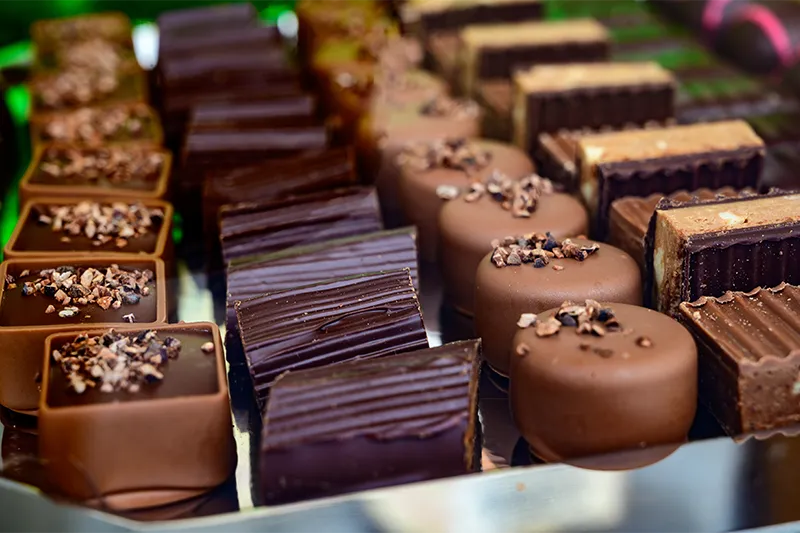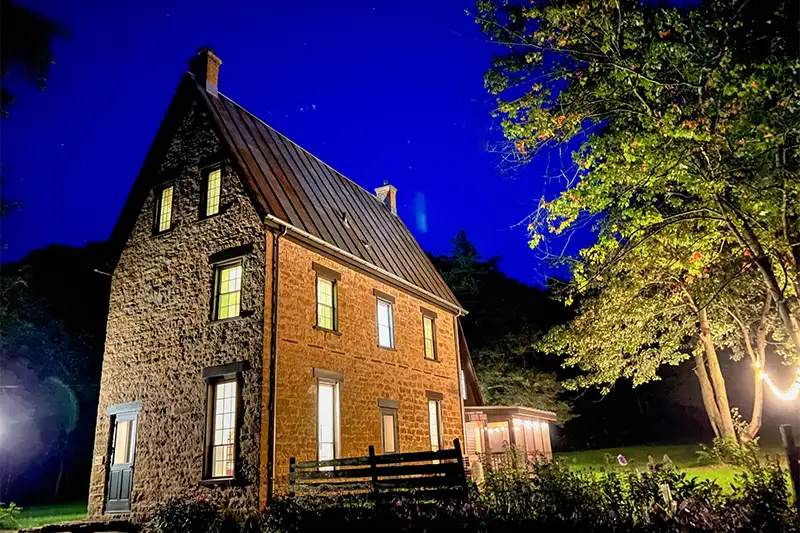It’s been two years and a month since we closed on the Brisbane House. It’s our third spring here. Spring brings rain, bright green buds, blooming flowers, and promise, as well as mud, ticks, garlic mustard, and raking gravel back onto the drive from the grass (snowplow).
Driving down Reimann Road toward the house, I can see the bluff in front of me just barely greening up. Last fall, I planted tons of bulbs and peony tubers sent to me by a colleague and friend. Approaching the Brisbane House sign triangle, I notice daffodils popping up. They’re an early and cheery sight also lining the path to the front door.
In the woods, the narcissus poeticus are blooming! They’re some of the first flowers I was surprised to discover in April 2021. I noticed them especially because they’re good for cutting and bringing into the house. They are little daffodil-like wildflowers and they grow in big patches past the lilac and down the road. They’re the most delicate white, six-petaled flowers, with a short, frilled corona of yellow and orange. Regardless of how grim the state of our nation becomes, I’m encouraged by how flowers continue to bloom, perennial symbols of hope.
18 acres are a lot to care for and now that we’ve completed the house and summer kitchen restoration, we can turn our attention more fully to the natural surroundings. First priority (after cutting flowers) is to pull out as much garlic mustard as we can. It’s invasive in Wisconsin and is so prolific that it chokes out other native species. It likes to congregate in the low woods area north of the house. Friends come out to help for two hours at a time and then I make a nice lunch for us to enjoy together. One particular day, Lilly and I collected lots of garlic mustard sprouts and we all enjoyed them on our salads that night. In the same area, we’ve hired Rob Baller to help us remove barbed wire that demarcated the property line and driveway, cut out a lot of buckthorn, grapevine, weed trees, and dead limbs, opening up the forest floor to sun. Our reward? An enormous bed of vibrant orange turk’s cap lilies dotted with yellow and Siberian iris that I’m sure will be the best show we’ve seen yet!
Going up the path that leads to our neighbor’s property, there’s more garlic mustard. We’ve got to do our part to protect our neighbor and her meticulously kept land as well as that of the Prairie Enthusiasts. We’ve also been regularly pulling out the small white pines that populate the woods on either side of that path in order let the oaks re-establish.
Other things we find in the woods include stinging nettle—fine to sauté and eat! We also found ONE morel this spring, the one and only morel we’ve ever found. We’ve also got lots of Virginia spring beauties. Their delicate white and pink flowers open only in the sunshine and their starchy tubers were foraged by Native Americans. To the northwest, the rhubarb and asparagus are growing. It’s funny to uncover short stalks of spargel (white asparagus) underneath the lawn clipping. Of course, there are a million black raspberry canes that are leafing out in the woods and ringing our lawn, and are even trying to pop up in the flower beds.
On the domestic side, we’ve already been able to weed the flowerbeds, taking out a lot of the overly prolific ground cover and blades of grass, so that the peonies, roses, irises, bluebells, day lilies, yarrow, bee balm, and hosta can flourish. This year I also planted seeds of dill, thyme, parsley, chamomile, calendula, and mâche lettuce. I’m anxious to see what will come up!
Two of the most important visits I’ve had recently were from people who know about this landscape and landscape architecture.
First, on a cold rainy day, Janet Miller came by to thoughtfully advise us on things like how guests will move about the property and how we can still downplay some of the more functional aspects of the property (like the mechanicals). We relocated the yellow bench to the back of the garden bed to better take in the view of Rattlesnake Ridge and the shifting play of light on the trees. She was there when we were placing three new flowering trees for the front yard: a plumb, crabapple, and sour cherry. Bruce had Lilly’s help digging the holes and planting them. They’re for Lilly, in honor of her 21st birthday last May.
Darcy Kind, the private land owner liaison from the DNR also visited. It was considerably sunnier! Darcy and I walked around the yard, through the woods, and up the path. She told me how bumblebees overwinter in the ground and upon awaking from their long seasonal naps, feed on the nectar for sustenance, then go about their business collecting pollen. We looked at and identified the wildflowers they’d be visiting, and we stooped to pick stray garlic mustard plants while we chatted. We talked about ridding the honeysuckle and buckthorn from the shrub layer but replacing them with things like elderberry and rye grass so the invasives don’t have a chance to re-establish in the voids. Darcy pointed out wild cherry, maple leaf viburnum, black and red oaks (and oak wilt), Pennsylvania sedge, and our more unfortunate groves of walnut and box elder. I learned how to see where areas of land had been compacted by animals, such as cattle or horses. We perused the rhubarb and asparagus patch, sampling some tender, young shoots. She also identified bird calls for me, especially the sing song of grosbeaks and “drink your tea” of towhees. We’ve already got loads of red-wing black birds, blue jays, cardinals, and robins. Diversifying our trees will in turn diversify the insects and birds that are attracted to Brisbane.
We have a lot of work to do, but in the meantime, we’ll jet out there between guests to weed and primp the property in manageable bits. We welcome your help, so get in touch if you want to spend some time in nature (and enjoying a delicious homemade lunch).






